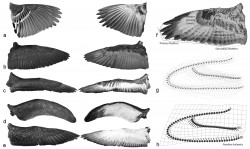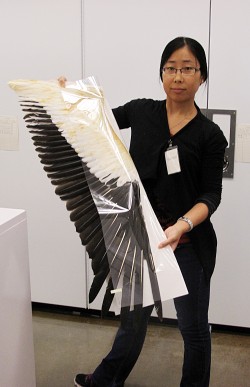Bird Wing Shape Depends on Family More than Flight Style
October 11, 2016


In a finding that could change the way scientists think about bird evolution, researchers have found that the shape of bird wings is influenced more by how closely related species are to one another than by flight style.
The research challenges scientific beliefs that assume the way a bird species flies—whether it primarily dives, glides or flaps, for instance—plays the primary role in the evolution of its wing shape. It also indicates that it may be more difficult than previously thought to infer flying behaviors of early birds and the first flying dinosaurs from fossils alone.
Julia Clarke, a professor in the Jackson School of Geosciences Department of Geological Sciences, conducted the work with Xia Wang, a postdoctoral researcher who led the study. Their research was published in the journal Proceedings of the Royal Society B: Biological Sciences in October 2015.
The study is the first to analyze wing geometry across all major groups of birds. By comparing geometry across species and clades–groups of organisms that evolved from a common ancestor–the researchers found that birds that are closely related evolutionarily have similar wing structures, even if the birds show very different flight styles. For example, albatrosses, penguins and loons, despite looking very different from one another, all belong to the clade Aequornithes and have a wing shape that is very similar.
Back to the Newsletter